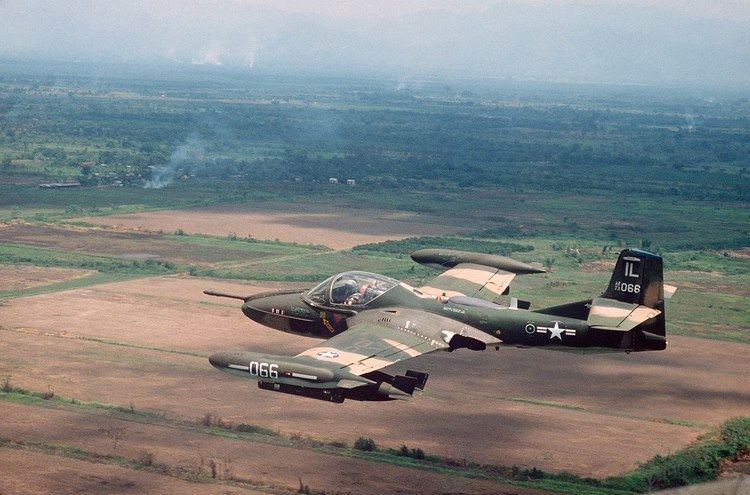 | ||
Counter-insurgency aircraft or COIN aircraft are a specialized variety of military light attack aircraft, designed for counter-insurgency operations, armed reconnaissance, air escort of ground forces, and ground support against "low-intensity engagements"; usually irregular groups of insurgents armed with artillery and/or portable rockets.
Contents
Roles
Some of the roles carried out by counter-insurgency aircraft include:
For an aircraft—whether fixed-wing or rotary—to effectively carry out all these roles, it should have specification characteristics such as low loitering speed, long endurance, simplicity in maintenance, and the capability to perform short or vertical take-offs and landings from makeshift and roughly constructed runways.
History
The first use of counter-insurgency aircraft was in the 1920s and 1930s during some of the colonial wars, in nations like Ethiopia and Iraq. The benefits offered by even a single aircraft in tasks such as reconnaissance or strafing small groups of individuals proved immeasurable. As the British found in Iraq in the 1920s and from some encounters within the frontiers of Pashtunistan, aircraft stripped away many of the advantages that traditional insurgents had held. It also offered a way of inflicting direct and cost-effective retaliation on the communities that supported the insurgents.
By the late 1950s, French air operations in the Algerian War was decidedly counter-insurgent in nature, with helicopters such as the Piasecki H-21 being used not only to carry infantry, but also machine guns and rocket launchers on an ad hoc basis, to reach FLN guerilla positions on otherwise inaccessible mountain ridges and peaks.
As late as the Vietnam War, counter-insurgency missions were flown by existing aeroplanes and helicopters hastily adapted for the role, notable examples being the North American T-28 Trojan and Douglas A-1 Skyraider. Eventually, dedicated specialized counter-insurgency aircraft began to be produced. Examples including:
